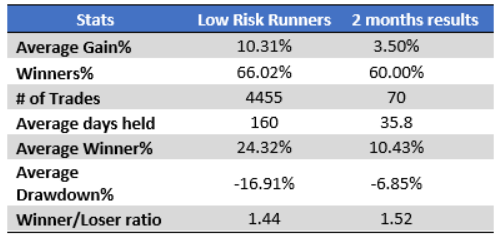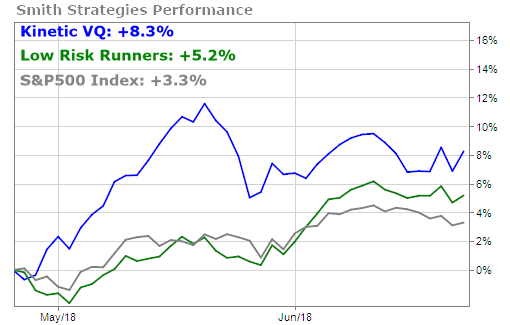We’ve published some pretty compelling results from our back-tested strategies over the past several weeks. You can review some of these success stories using Kinetic VQ stocks here and the Low Risk Runner (LRR) strategies here and here.
One of our Lifetime subscribers had a legitimate concern about these numbers. He wrote:
I don’t know if you’ll get this email, but I have one overriding issue
with your strategies. All of your strategies look at results for a large
number of trades. However, any individual is only in practice going to
execute a small sample of these trades, so their actual results could
deviate substantially from the amazing results you can substantiate
using a larger data sample.I’m wondering if you can address this concern.
Thanks,
Gary
Gary makes a good point. In our studies we analyzed 829 Kinetic VQ stocks and 4,455 Low Risk Runner stocks — but there’s no way an individual investor is going to invest in over 5,000 different stocks, indices, funds, and commodities! Moreover, we analyzed data going back over 20 years, covering all different kinds of market conditions.
So, why should Gary have confidence today that using these strategies to come up with a few trading ideas of his own will yield similar positive results?
Well, the fact that we used so many different stocks over such a long period of time and such different market conditions is what actually gives us confidence that these are sound strategies that will still work for investors today.
While we can never “prove” that these strategies will work going forward, we can ask the question of how they have performed over the past couple of months since we first published them.
Below are the two-month results of each strategy alongside the original longer-term results of each strategy.
The Kinetic VQ strategy has had 41 trades in the past two months. The percentage of winners is over 60%, and so far, the average winning trade has outperformed the average losing trade by about 30%.

The Low Risk Runner strategy had 70 trades and also 60% winning trades, with the average winning trade outperforming the average losing trade by about 50%.

Here’s a comparative performance chart of the two strategies versus the S&P 500 over the past two months.

Keep in mind that this has been a difficult market with increased volatility — and the results are still quite good. Both strategies are positive and beating the S&P 500 in difficult market conditions.
Two months of outperformance is admittedly a small sample size, but it’s still an encouraging sign that these are indeed robust strategies that will continue to produce the kind of positive future performance that they produced in the past.





